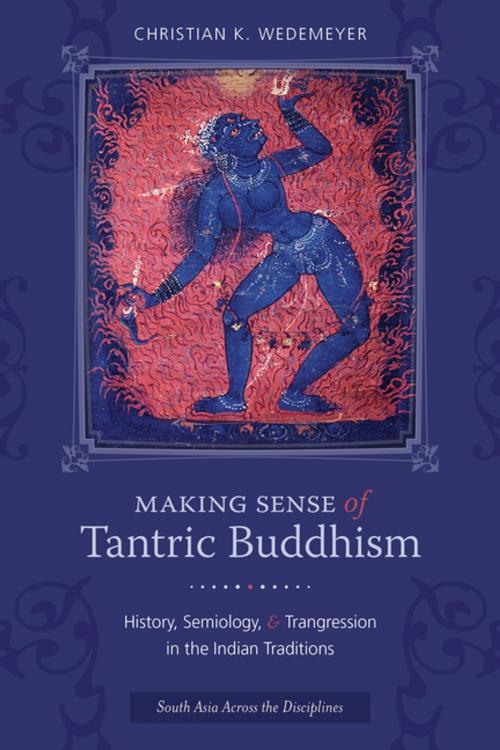Making Sense of Tantric Buddhism
History, Semiology, and Transgression in the Indian Traditions
Nonfiction, Religion & Spirituality, Philosophy, Eastern, Eastern Religions, Buddhism| Author: | Christian Wedemeyer | ISBN: | 9780231530958 |
| Publisher: | Columbia University Press | Publication: | December 4, 2012 |
| Imprint: | Columbia University Press | Language: | English |
| Author: | Christian Wedemeyer |
| ISBN: | 9780231530958 |
| Publisher: | Columbia University Press |
| Publication: | December 4, 2012 |
| Imprint: | Columbia University Press |
| Language: | English |
Making Sense of Tantric Buddhism fundamentally rethinks the nature of the transgressive theories and practices of the Buddhist Tantric traditions, challenging the notion that the Tantras were "marginal" or primitive and situating them instead—both ideologically and institutionally—within larger trends in mainstream Buddhist and Indian culture.
Critically surveying prior scholarship, Wedemeyer exposes the fallacies of attributing Tantric transgression to either the passions of lusty monks, primitive tribal rites, or slavish imitation of Saiva traditions. Through comparative analysis of modern historical narratives—that depict Tantrism as a degenerate form of Buddhism, a primal religious undercurrent, or medieval ritualism—he likewise demonstrates these to be stock patterns in the European historical imagination.
Through close analysis of primary sources, Wedemeyer reveals the lived world of Tantric Buddhism as largely continuous with the Indian religious mainstream and deploys contemporary methods of semiotic and structural analysis to make sense of its seemingly repellent and immoral injunctions. Innovative, semiological readings of the influential Guhyasamaja Tantra underscore the text's overriding concern with purity, pollution, and transcendent insight—issues shared by all Indic religions—and a large-scale, quantitative study of Tantric literature shows its radical antinomianism to be a highly managed ritual observance restricted to a sacerdotal elite. These insights into Tantric scripture and ritual clarify the continuities between South Asian Tantrism and broader currents in Indian religion, illustrating how thoroughly these "radical" communities were integrated into the intellectual, institutional, and social structures of South Asian Buddhism.
Making Sense of Tantric Buddhism fundamentally rethinks the nature of the transgressive theories and practices of the Buddhist Tantric traditions, challenging the notion that the Tantras were "marginal" or primitive and situating them instead—both ideologically and institutionally—within larger trends in mainstream Buddhist and Indian culture.
Critically surveying prior scholarship, Wedemeyer exposes the fallacies of attributing Tantric transgression to either the passions of lusty monks, primitive tribal rites, or slavish imitation of Saiva traditions. Through comparative analysis of modern historical narratives—that depict Tantrism as a degenerate form of Buddhism, a primal religious undercurrent, or medieval ritualism—he likewise demonstrates these to be stock patterns in the European historical imagination.
Through close analysis of primary sources, Wedemeyer reveals the lived world of Tantric Buddhism as largely continuous with the Indian religious mainstream and deploys contemporary methods of semiotic and structural analysis to make sense of its seemingly repellent and immoral injunctions. Innovative, semiological readings of the influential Guhyasamaja Tantra underscore the text's overriding concern with purity, pollution, and transcendent insight—issues shared by all Indic religions—and a large-scale, quantitative study of Tantric literature shows its radical antinomianism to be a highly managed ritual observance restricted to a sacerdotal elite. These insights into Tantric scripture and ritual clarify the continuities between South Asian Tantrism and broader currents in Indian religion, illustrating how thoroughly these "radical" communities were integrated into the intellectual, institutional, and social structures of South Asian Buddhism.















